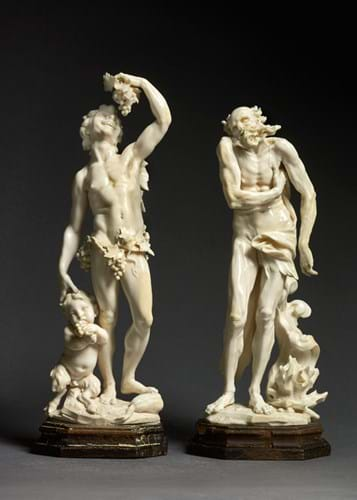
Balthasar Permoser is considered one of the greatest sculptors of the German Baroque and only one other work attributed to the Salzburg-born artist remains in the UK – the ivory entombment now in the Victoria and Albert Museum.
The statuettes from 1695 were deemed by the UK’s export reviewing committee to meet two of three Waverley Criteria (the basis used to determine whether works should be blocked from export). The decision to temporarily bar the export of Autumn and Winter was taken partly down to their aesthetic importance but also on account of their “significance to the study of international influences in European sculpture, in particular sculpture made in Britain”.
While it remains to be seen whether a UK institution will make an attempt to purchase the statuettes given the controversy currently surrounding ivory works of art, one dealer said the decision to stop the export even showed the UK’s “prevailing enlightened attitude to ivory”.
Noble Provenance
The statuettes have provenance to the Duke of Braunschweig and they are thought to have been confiscated on the order of Napoleon in 1806. They later came to the UK after being acquired by Edward Viscount Lascelles in Paris who bought them to Harewood House in Leeds.
Autumn and Winter depict the classical gods Bacchus and Vulcan. Bacchus, the God of wine, was portrayed by Permoser drunkenly eating a bunch of grapes while resting his foot on a wine gourd. Winter is portrayed as an aged Vulcan, the god of fire, who is shown shielding himself from the cold.
Dealer and member of the export reviewing committee Lowell Libson said: “Important examples of Baroque art of northern Europe are relatively sparsely represented in UK public collections… Autumn and Winter rank not only as the best and rarest examples of such objects in the UK but as prime examples of the work of the most important northern sculptor of the period. The retention in this country of these princely objects would greatly enhance our holdings and understanding of the fine and decorative arts of the high baroque.”
The export licence bar expires on September 2 but may be extended by three months if a serious intention is made to purchase them at the recommended price.





